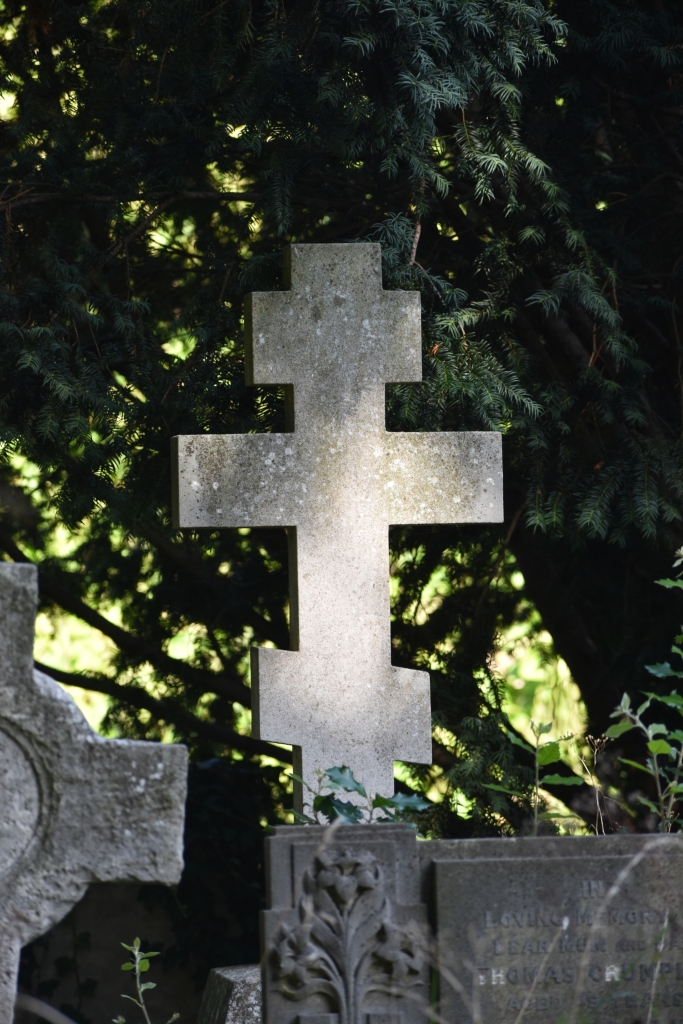
Orthodox cross, Brompton Cemetery, London. ©Carole Tyrrell
We are approaching Easter which is the holiest event in the religious calendar and it started me thinking about an appropriate symbol for this month. The Orthodox cross is one that has always intrigued me and I have been asked about it on my Symbol tours in Brompton Cemetery. There are a good selection of Orthodox crosses within Brompton Cemetery as Metropolitan Anthony (Bloom) is buried there and he has a fine Orthodox cross with an inscription in gold leaf. It is one of the most visited graves within the cemetery and visitors often leave floral tributes on it. He was the head of the Russian Orthodox Patriarchal church in Great Britain and Ireland and 2023 was the 20th anniversary of his death. The cross marking his grave is known as the Russian Orthodox Cross. But for this post I will refer to it as the Orthodox cross.
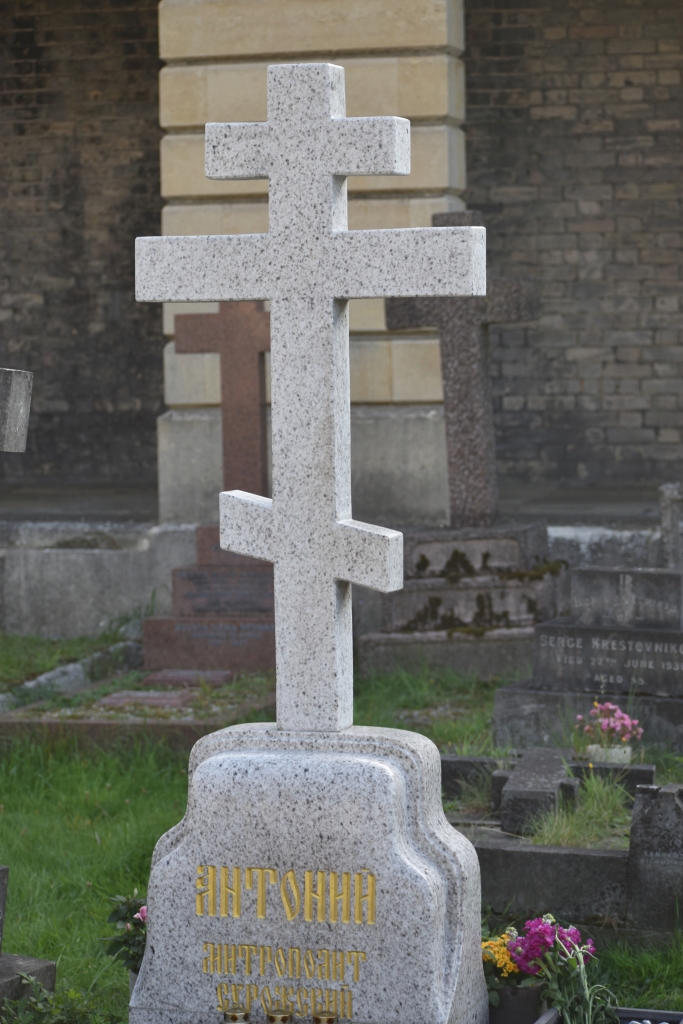
The Russian Orthodox Cross above Metropolitan Anthony’s grave, Brompton Cemetery. ©Carole Tyrrell
Crosses appear in many religions and cultures from the ancient Egyptians ankh which is a cross with a loop at the top and means ‘life’, the Celtic Cross with the pagan sun circle surrounding the cross and the more familiar Latin cross. Since the 3rd and 4th centuries, the latter has been the main symbol of Christianity as it is a representation of the cross on which Christ was crucified.
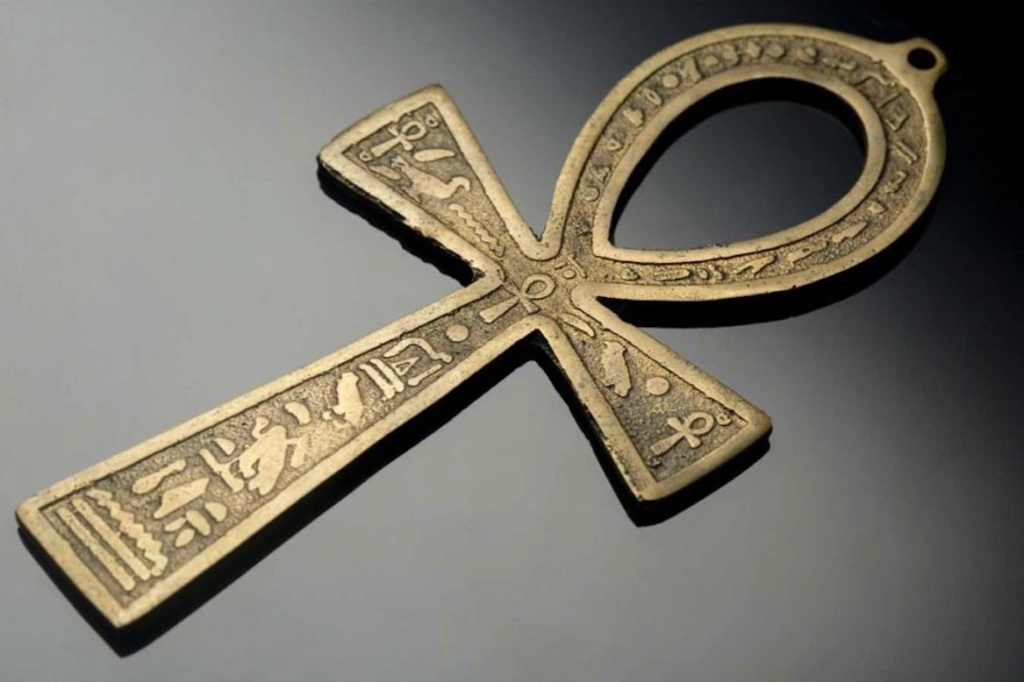
An engraved ankh. copyright http://www.summary.com
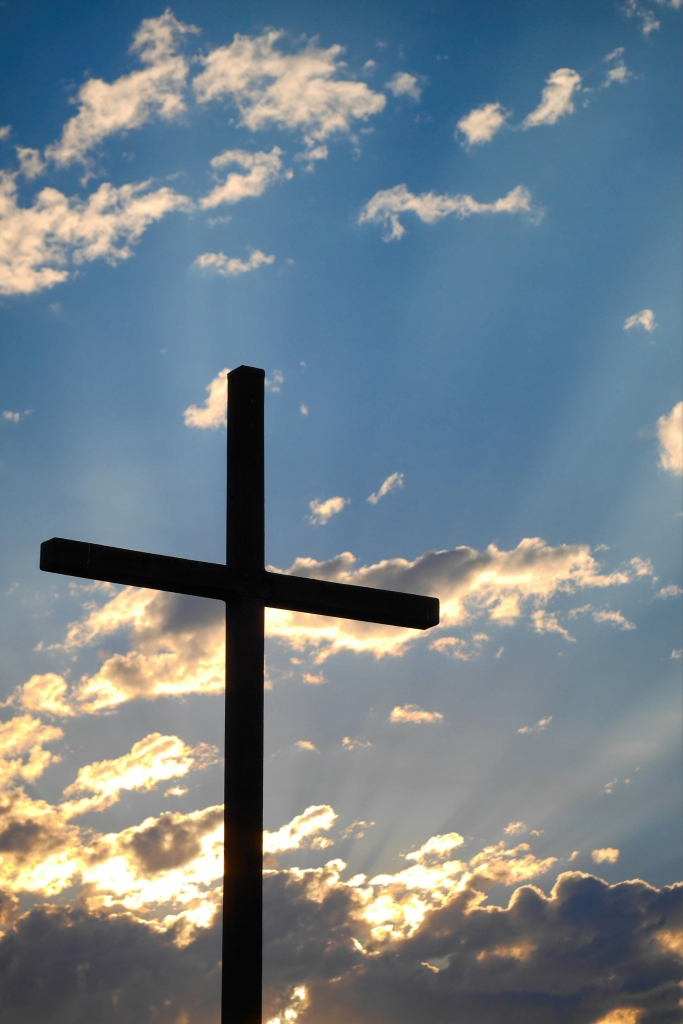
The Latin Cross Photo by Aaron Burden on Unsplash
The Orthodox cross is a six pointed cross, with three horizontal bars as you can see in the photo below. It has a short top one, a longer one beneath it and a slanted one at the bottom that points upwards.
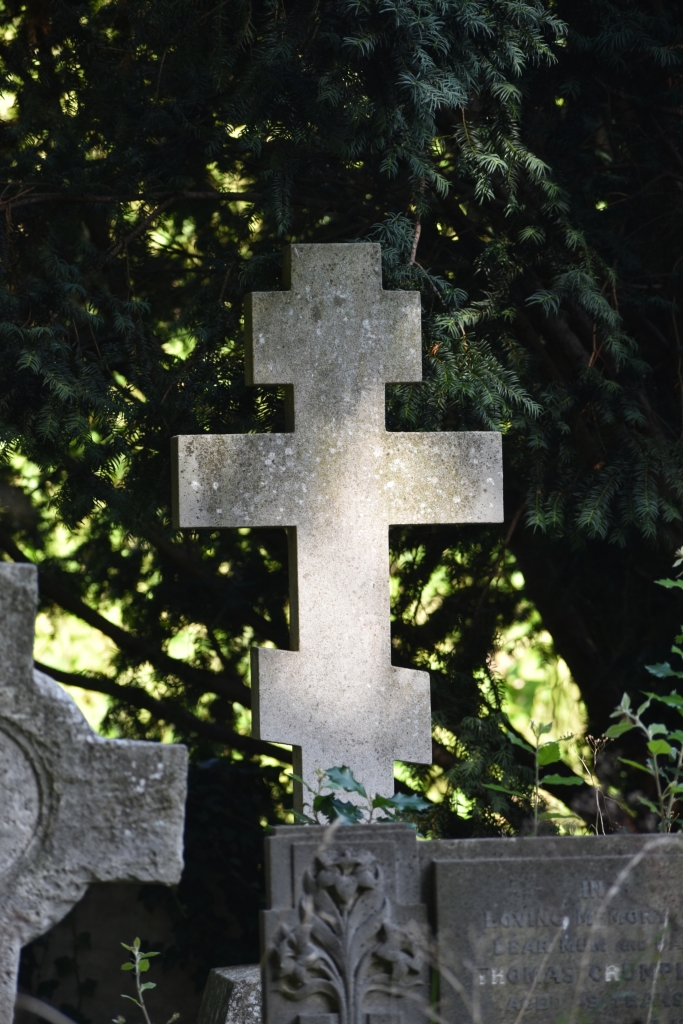
Orthodox cross, Brompton Cemetery, London ©Carole Tyrrell
The cross first appeared in the 6th century during the Byzantine empire. This was part of the Roman Empire and Constantinople, now modern day Istanbul, was its hub. The cross featured in mosaics and frescoes and it was Ivan the Terrible in the 16th century who is reputed to have encouraged its use to differentiate the Orthodox church from the Christian church. He was keen to promote Moscow as being the Third Rome.
Metropolitan Anthony’s grave has two crosses. One above the grave and one placed on it which is decorated and painted and shows how the cross is arranged.
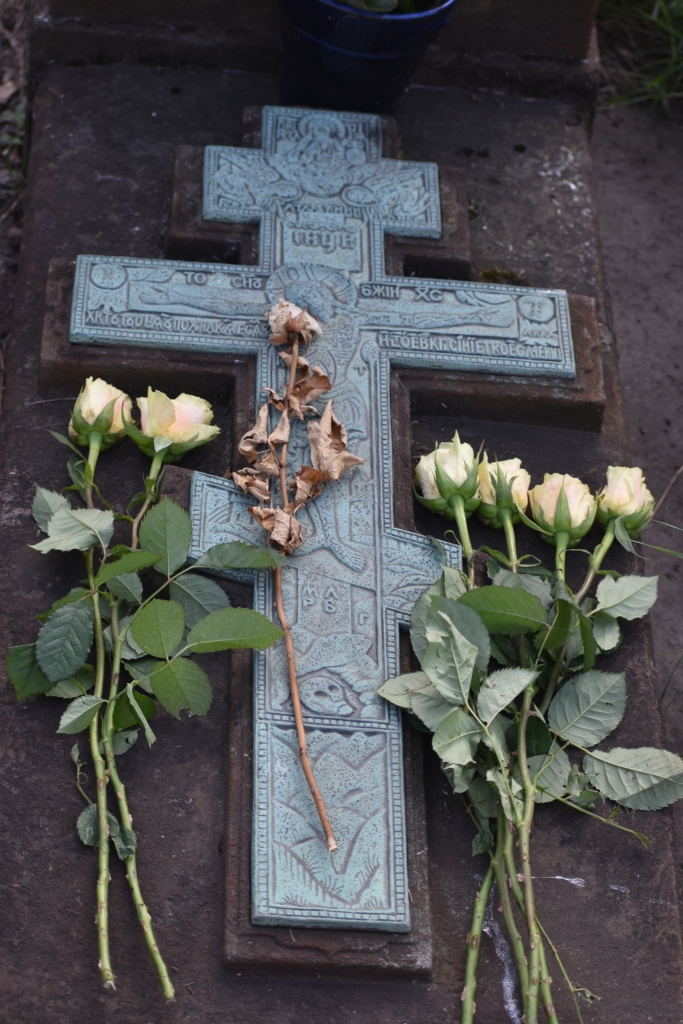
The Orthodox cross on Metropolitan Anthony’s grave. ©Carole Tyrrell
The Top Bar
This is known as the title or titulus board. Pontius Pilate ordered a sign to be hung in mockery over Christ’s head on the cross. On it was inscribed ‘Jesus of Nazareth, King of the Jews’ in Hebrew, Greek and Latin. This was abbreviated to INBI in Greek or the more familiar INRI. In Latin it appears as
‘Iesus Nazarenus Rex Iudarerum’
Hence INRI.
The Middle Bar
This was where Christ’s hands were nailed to the cross with his feet on the lower bar.
The Lower Bar
The slanted bottom bar was Christ’s footrest. The upper left of the bar always points heavenwards and the lower end points downwards. The tradition is that it’s slanted because Christ kicked it out of place during his final moments and it can also be interpreted as pointing to heaven and hell. It has also been thought that it may also symbolise the scales that traditionally weigh the dead’s sins and virtues. These appear in medieval wall paintings and I have seen an example in St Peter’s, Preston Park, Brighton, UK.
Beneath Christ’s feet, at the base of the cross, there is a stylised skull on top of a rock. According to the website www.rbth.com:
‘this symbolises Adam’s head as according to tradition, the remains of Adam, Eve and their descendants were buried right under the site of crucifixion at Golgotha. This, the blood of the crucified Christ, symbolically washed Adam’s bones and washed away original sin from them and their descendants. ‘
As I said earlier, the Orthodox cross has always intrigued me as to why it is so different from the traditional Christian cross. It has been fascinating to research it and I was lucky to have such a good example on Metropolitan Anthony’s grave.
© Text and photos Carole Tyrrell unless otherwise stated
References and further reading
Metropolitan Anthony of Sourozh – Brompton Cemetery – The Royal Parks
Anthony of Sourozh – Wikipedia
Russian Orthodox cross – Wikipedia
Meaning of the 3-Bar Russian Cross (orthodox.net)
What does the Russian Orthodox cross stand for? – Russia Beyond (rbth.com)
Eastern Orthodox / Greek Orthodox / Byzantine / Russian Cross | Symbols (symbolsproject.eu)
